Haven't seen a hole-by-hole of pics on this course, so here goes. Refer to Ran's writeup for the details and expert writeup, or maybe member or two can chime in...
PS If there's a hole you'd like to see more of, let me know, I took a ton of pics.
Opener, a downhill par 4:

2nd hole, tee shot: the first of several memorable up and overs
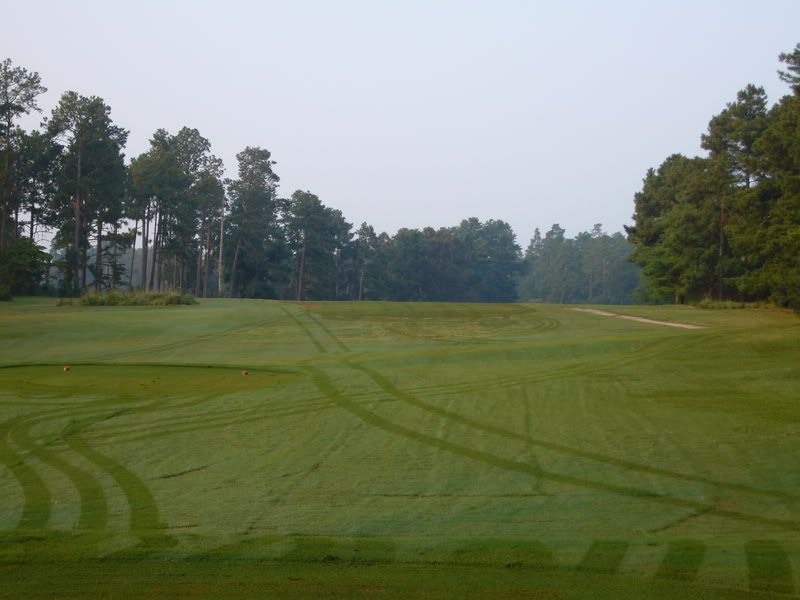
2nd green, as seen from ridge
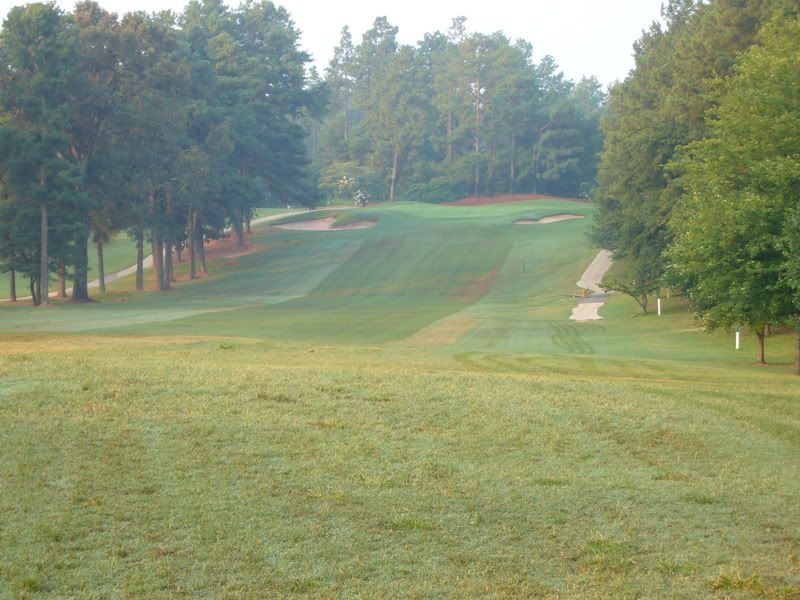
Heretics who would change the meaning of the strategic school of golf design, take note: in the hole position to the left, shots hit long are absolutely dead. The golfer most certainly has a shot -- but not a play. He must carry or negotiate a small swale of short grass, to a green running sharply downhill and to a cavernous, and I mean hand-wedge cavernous, bunker. Strategic school: that golfer is dead, he just doesn't know it yet.
3rd hole, a par 3
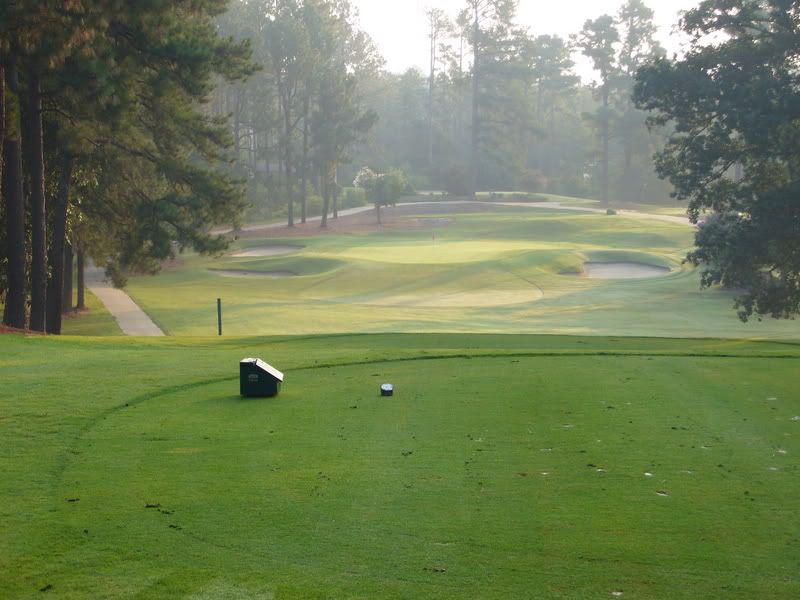
4th hole, uphill par 4 -- many holes, such as this one, need to cut back trees to reveal the green from the tee

Green
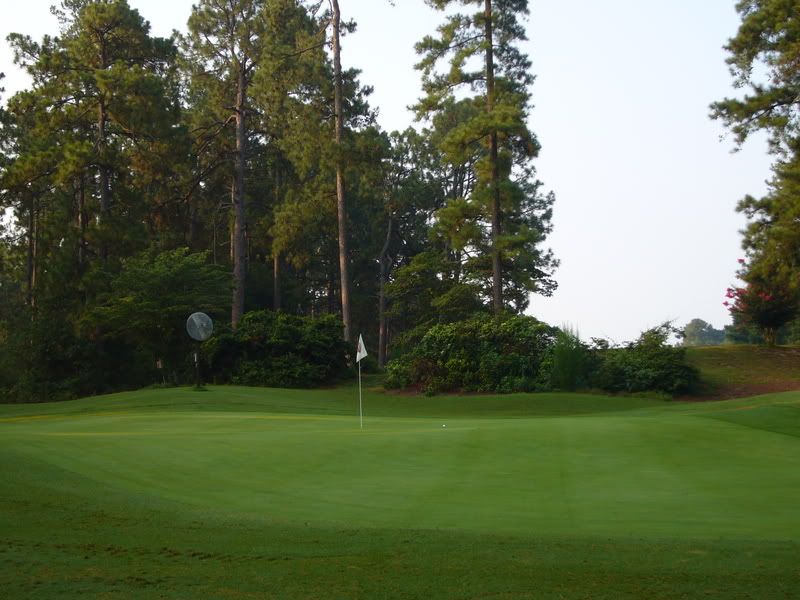
5th hole, another up and over -- the great thing about these tee shots they allow for audible gasps when a beautiful green comes into view, something that happens often on this course
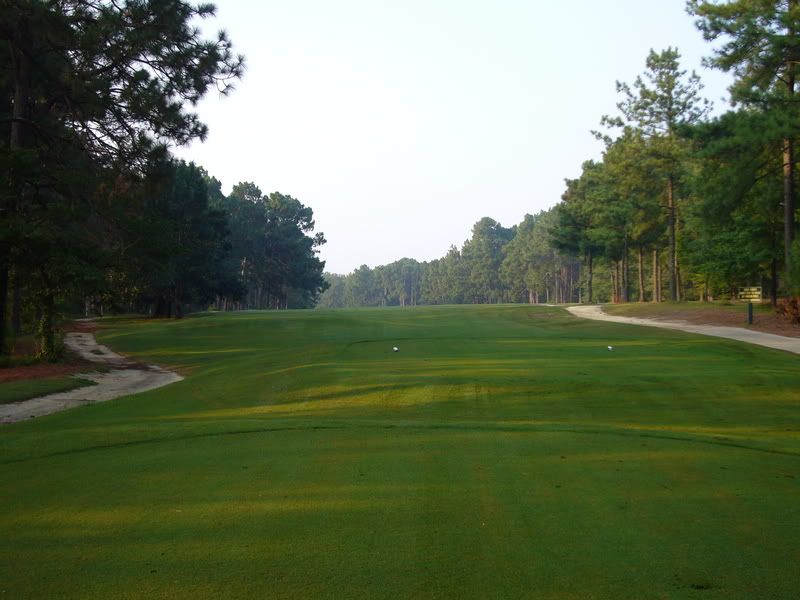
5th green

6th hole, dogleg right par 4 and no. 1 or 2 handicap
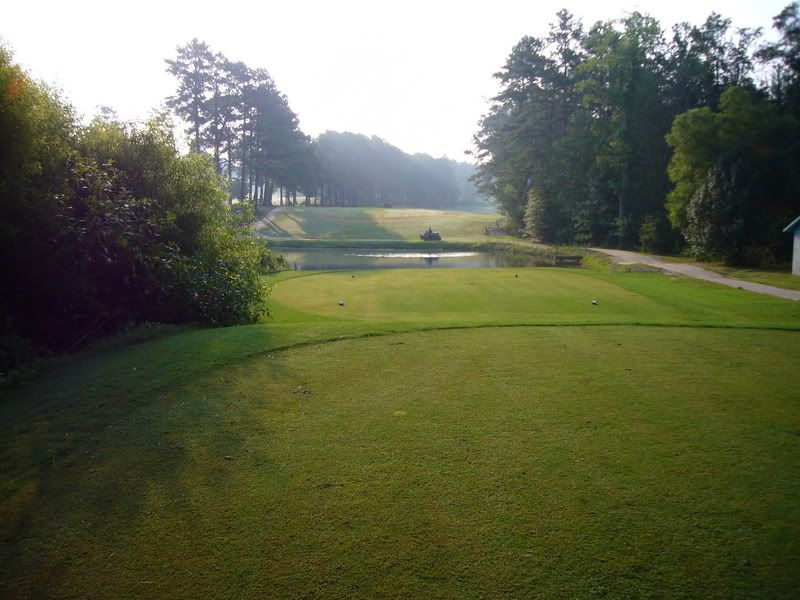
The awesome, flowing 6th green closes out what is in my opinion an all-world opening. The man sure knew how to start a course, didn't he?
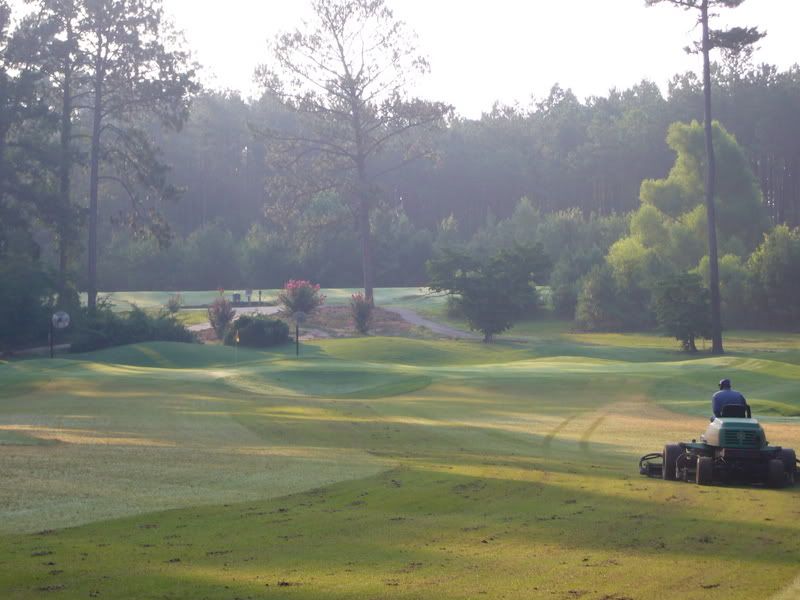
par 3 redan 7th -- is there a chainsaw in the house? I mean, good Lord!

The awesome 8th
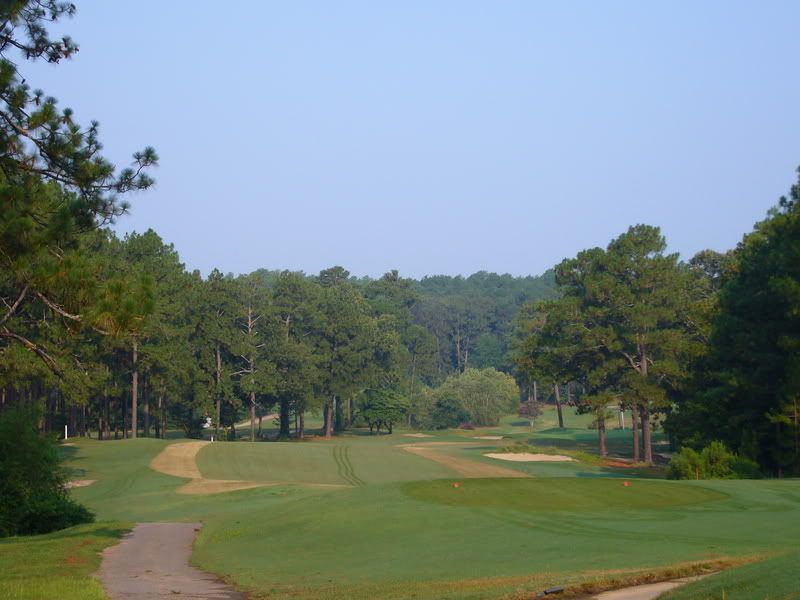
8th green

9th, a par 3
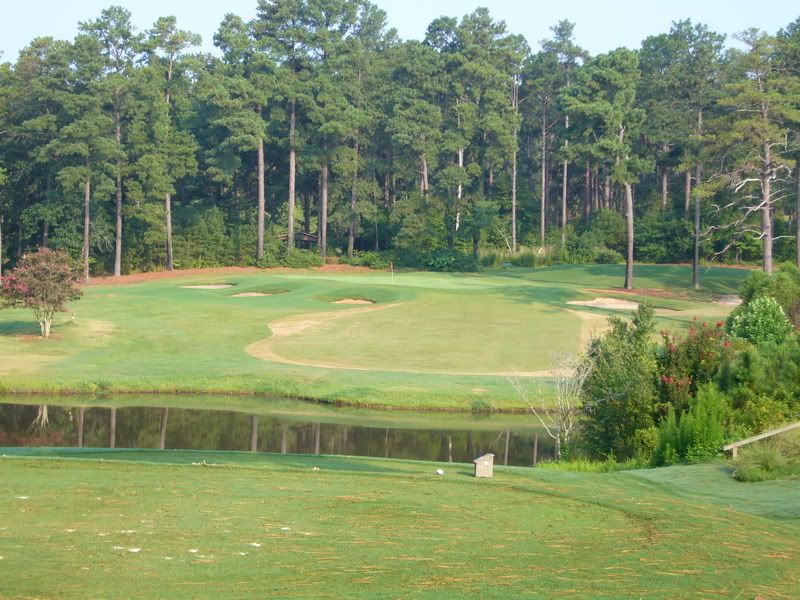
And now for an uphill hole: the 10th. As Ran notes, Ross gives us a number of up and overs, and just when we're about to tire, he benches a green into a hillside.

10th green
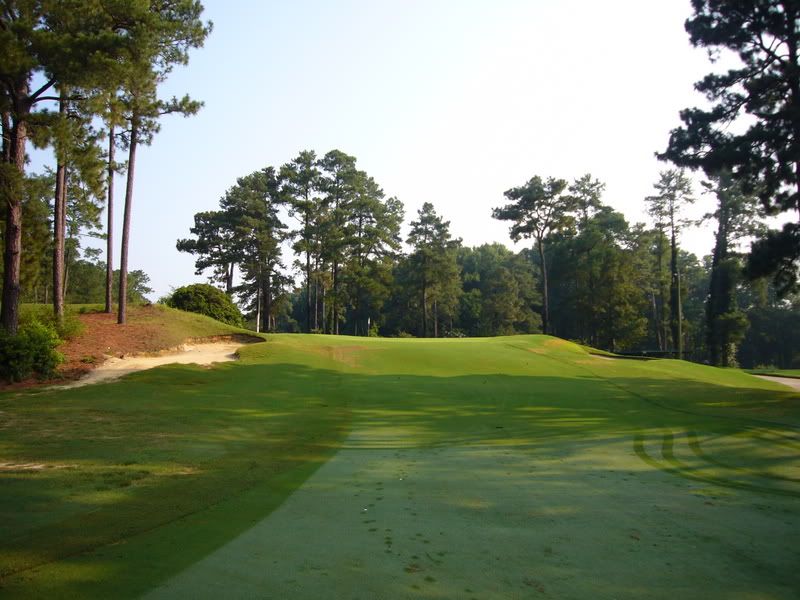
Par 4 11th: buzzzzzz....
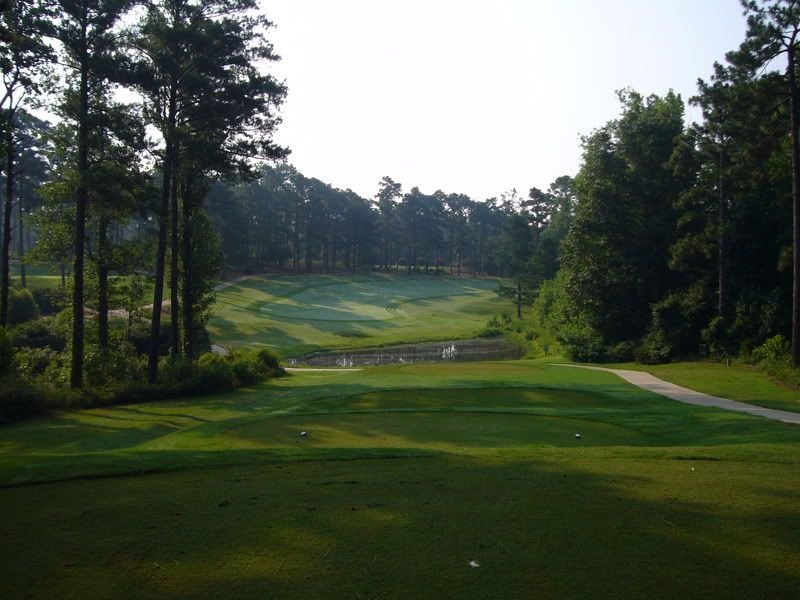
11 green: note line of fairway set against line of green!
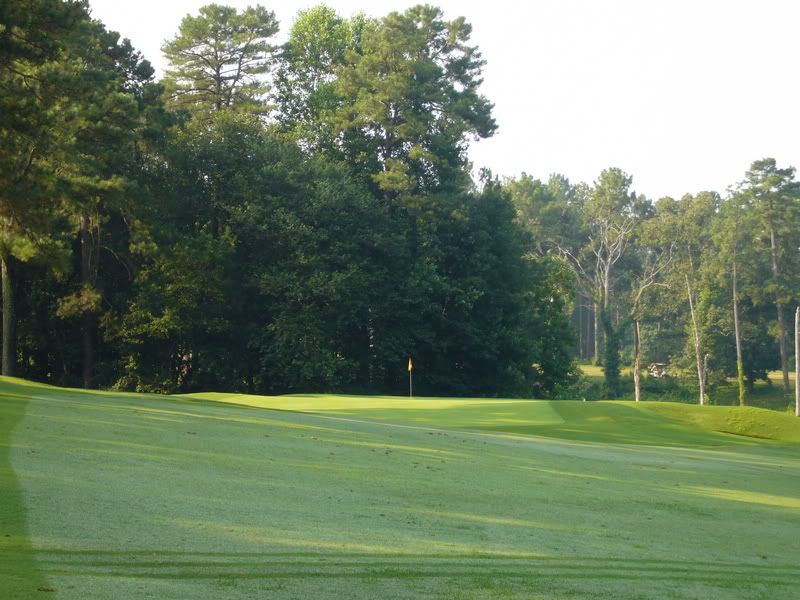
The brutal 12th

12 green
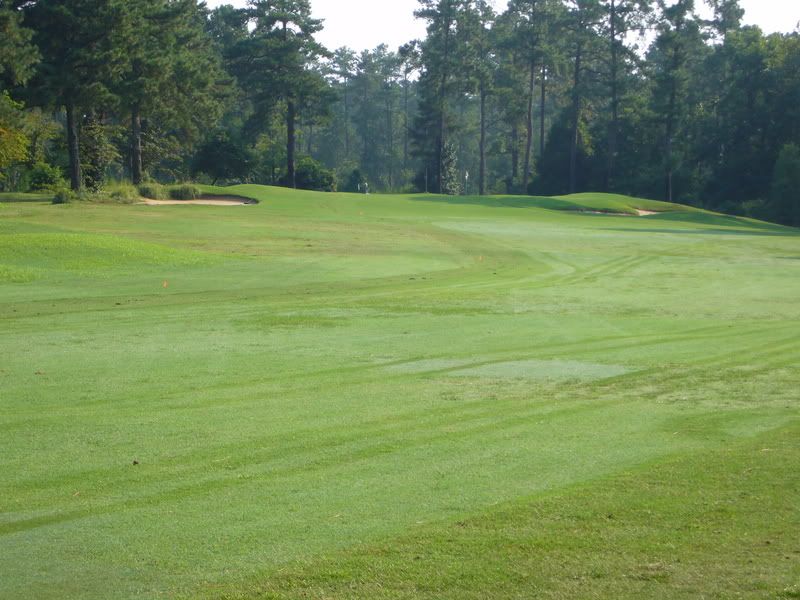
Downhill 13th
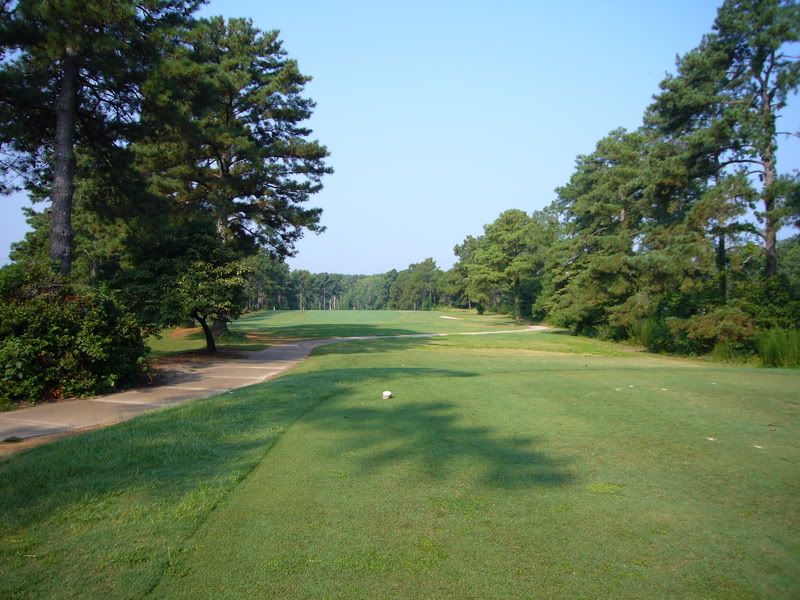
13 green -- notice the excellent use of ground in front of green: a small swale across the front that blocks many shots from reaching the green. Golfers already find it difficult to muster courage to hit all the way to this green; the swale is akin to a "pre-dug" grave the golfer's ball can settle in so that he more quickly may get down to the business of lying down in it. Then to the right a knob (the discolored patch of turf): right in the spot where many golfers would instinctively bail (flare shot / failure to finish swing) -- think Ross did that on purpose?
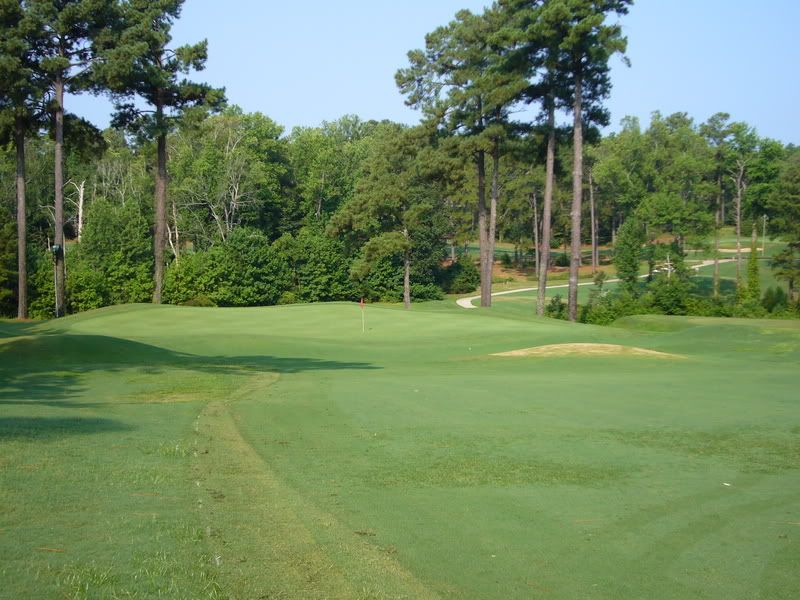
Long-carry par 3 14th -- bramble in front of tee annoying!
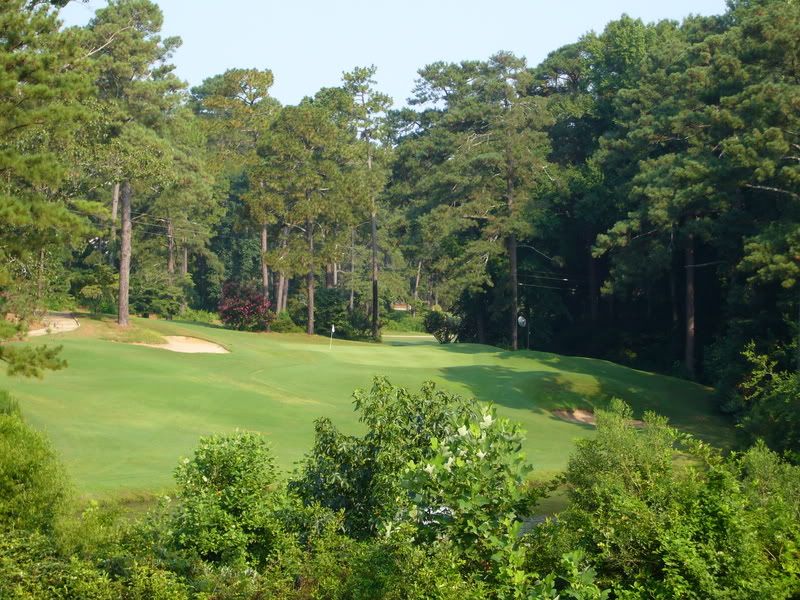
Uphill 15th: the tee sits on a hill, actually, "presenting" the hole, and green to us. (Note how hole appears uphill yet we can see the green.) I like the view but my understanding is Ross laid the original tee to the right, closer to 14 green, making the hole more a dogleg right.

15 green, looking back down fairway -- best angle to show green contours

15 green as seen from back and right -- good luck to the golfer who flares his approach (another example of the strategic school of design: not a bunker or pond in sight, but the golfer almost certainly will pay for his mistake of missing to the wrong spot / being out of position)

Now go back and compare 8 - 10 with 13 - 15. Awesome example of "small multiples": Ross sort of repeats himself! (Down hill hole to "hanging" green, followed by forced-carry par 3, followed by uphill hole to benched green.)
16th hole
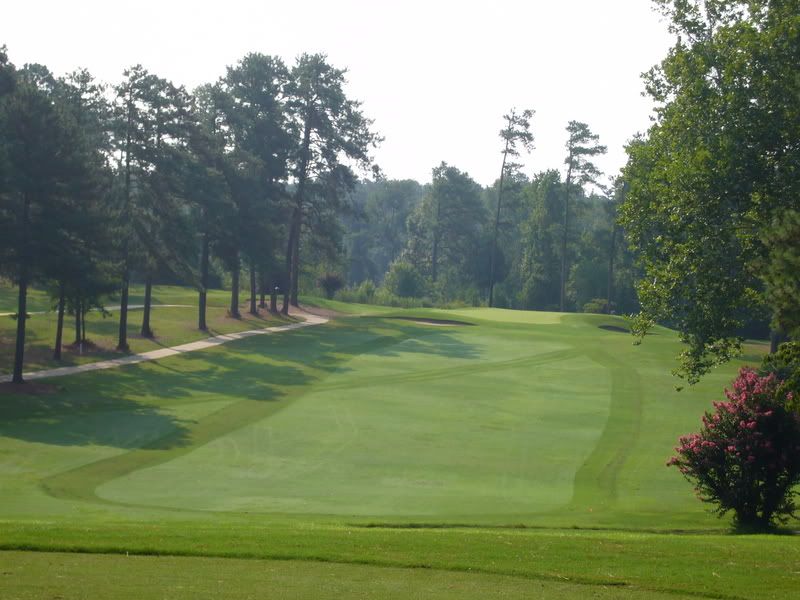
16 green: if it's been said once it's been said a thousand times, do not get above the hole on a Ross green!
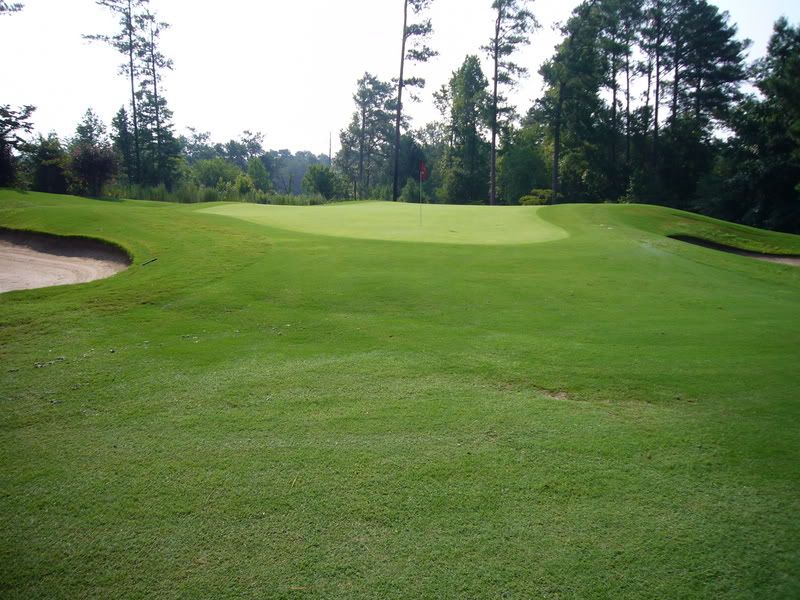
17th hole: another solid downhiller, but to my eye it looked kinda fuzzy in comparison to the others. If they're going to let the pines define the broad playing corridors on the other holes, then this one could use it, in particular along that spacey line of pines on the right.
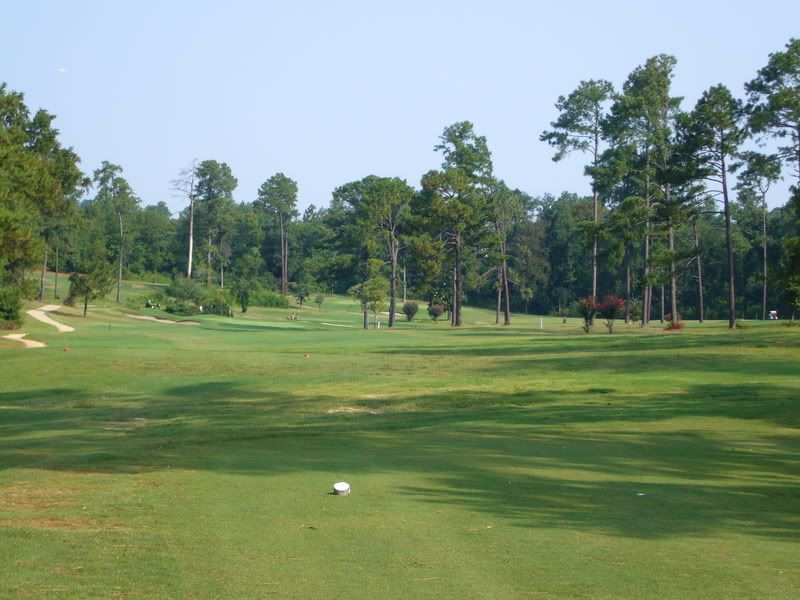
17 green
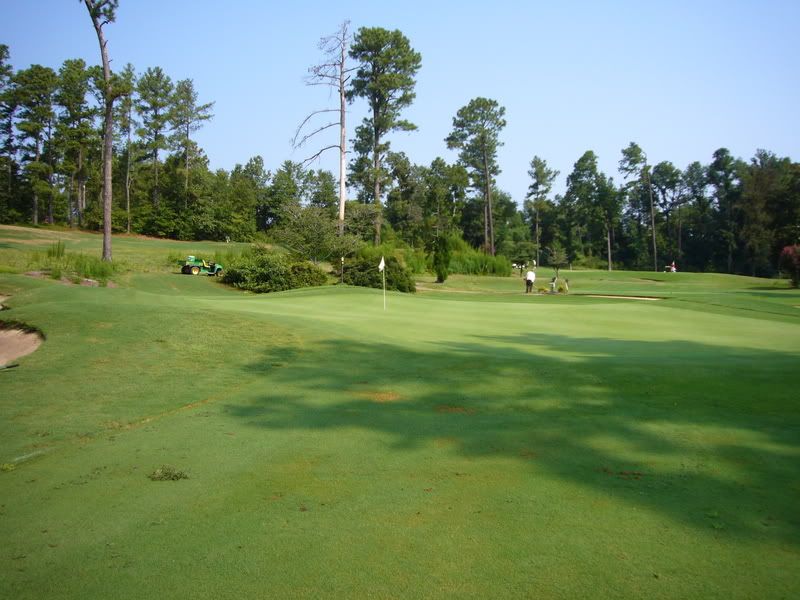
18th, a great finisher with as Ran notes a score-frustrating elephant buried in the LZ

18th LZ
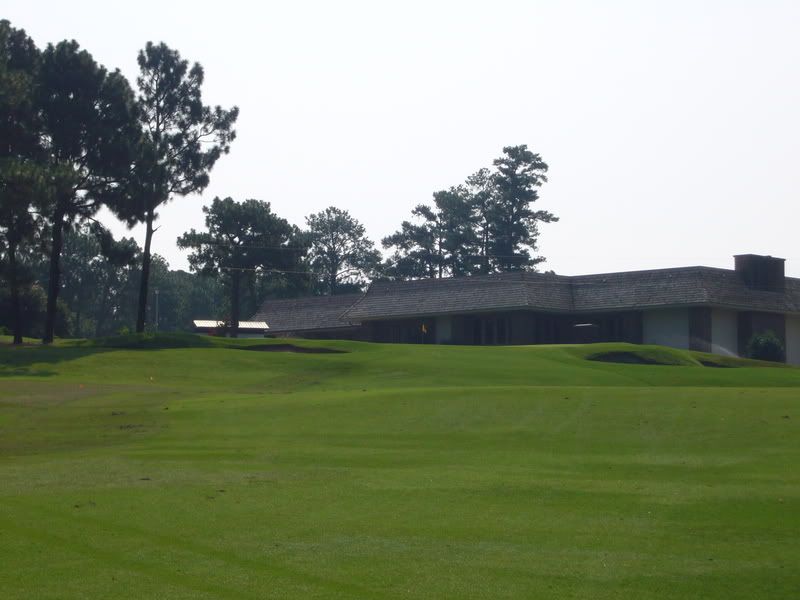
18th green
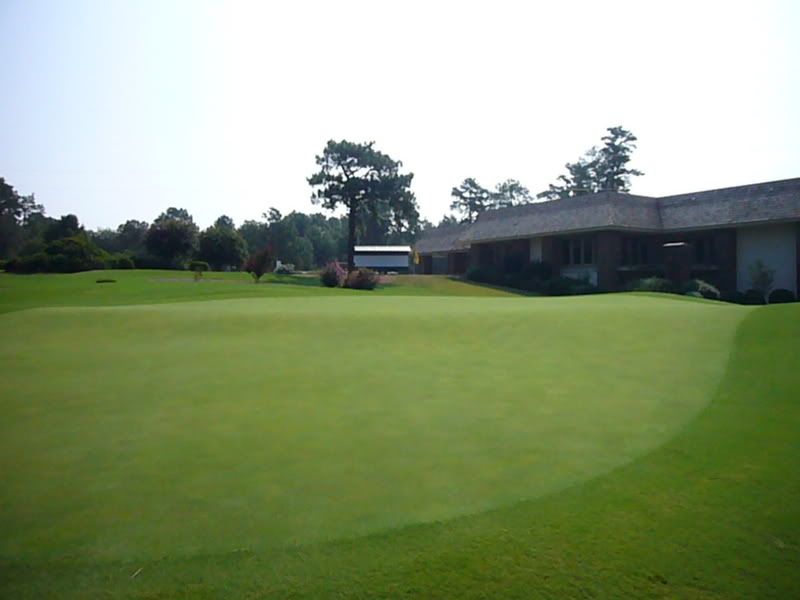
The routing I thought was truly inspired; in particular, how he sited the tees and greens. The holes sit so beautifully on the land. Just look at those "hanging" or precipice greens on 7, 8, and 13! He must have gotten very excited when he walked the property
Mark